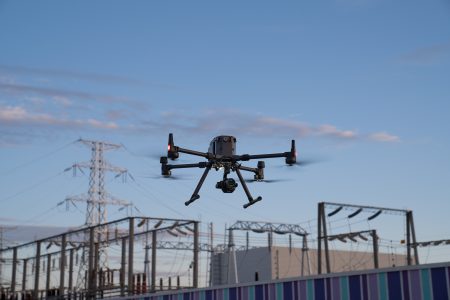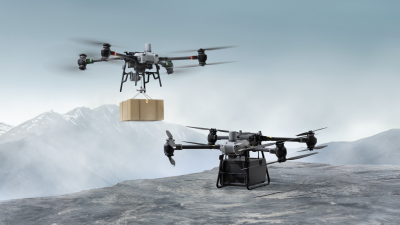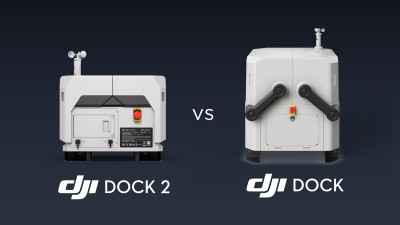DJI Enterprise Zenmuse P1: Parameter Recommendations and FAQ
DJI Enterprise Photogrammetry Payload
The best photogrammetry payload from DJI Enterprise: Zenmuse P1 has its own parameter recommendations & FAQs to maximize its performance.
In this blog article, We will learn together about the 9 parameters and 4 FAQ about the best photogrammetry payload DJI Zenmuse P1.Please Use the latest DJI enterprise P1 firmware version: v02.04.01.02
1.Plan the target area.
2. In the DJI Pilot App, you go to mission planning – create a route – mapping, draw the target area on the map. Due to the safety consideration, the longest single flight route should not exceed 5000m (If it exceeds 5km, the task upload will fail). If you have a very large area, please split it into smaller zones.

3. Select Camera: Photogrammetry payload DJI Enterprise Zenmuse P1 – 35 mm4.
4. Smart Oblique: If your task is to capture orthophoto and generate orthomosaic, please disable Smart Oblique. If your task is to generate high-quality 3D models, you need to enable this option, where the gimbal automatically rotates to take photos at the different angles needed.

5. Photogrammetry payload DJI Enterprise Zenmuse P1 Parameter setting for orthophoto capture
- Flight Route Altitude: The altitude setting is related to GSD requirements. For example, for a project with GSD=3cm/pixel, the corresponding flying altitude is about 240m. (H=GSD*80)
- Target Surface to Takeoff Point: you can keep default “0”.
- Takeoff Speed (speed from the takeoff point to the first waypoint): you can keep the default 10m/s.
- Speed: It is recommended to adjust to maximum value (improve efficiency)
- Elevation Optimization: It is recommended to enable elevation optimization. When enabled, the aircraft will fly to the center of the mapping area after it finishes its flight route and capture a series of oblique photos to optimize the elevation accuracy.
- Upon Completion: Return To Home is recommended;
- For the advanced settings: Side Overlap Ratio of 70 is recommended.(If the accuracy requirement is not high, it can be set to 60 to improve work efficiency), and for the frontal overlap ratio, 80 is recommended. For the course angle: you can keep the default. For the margin: can be set according to your need. For the photomode, users can keep the default “Time Interval Shot”.
- Payload Settings, on focus mode, using first Waypoint Autofocus is recommended. And for dewarping, it should be disabled to keep accuracy;
6. Photogrammetry payload DJI Enterprise Zenmuse P1 Parameter setting for smart oblique capture.
- Gimbal Angle: -45 degrees are recommended, which can capture more facade information. The landing gears will be photographed in some cases with -45 degree angle, but it does not affect model quality. (-50~-60 degree setting can avoid this).
- Flight Route Altitude: The altitude setting is related to GSD requirements, and make sure that oblique’s GSD is less than the GSD requirement.
- Altitude Mode: If there is no special requirement, it is recommended to set it to relative takeoff point (ALT);
- Target Surface to Takeoff Point: you can keep default “0”.
- Takeoff Speed (speed from the takeoff point to the first waypoint): you can keep the default 10m/s.
- Speed: The speed of a smart oblique mission will be dynamically changed during the mission (slow in the middle and fast at the edges), and does not need to be set.
- Upon Completion, using Return To Home is recommended;
- Advanced Settings: Side Overlap Ratio: 70 is recommended. (It can be adjusted to 80 according to accuracy requirements.). For the frontal overlap ratio, 80 is recommended. For the course angle, users can keep the default;
- Payload Settings: On focus mode, first waypoint autofocus is recommended, and for dewarping, it should be disabled to keep accuracy;
7. Save the Mission
8. Other settings: Using camera settings, go to M mode + Auto ISO is recommended, you can adjust shutter speed and aperture according to the environment Recommended shutter speed should be faster than 1/500s and the aperture should be smaller than f/5.6). Mechanical shutter should be enabled and dewarping should be disabled. For the RTK, you can choose network RTK, custom network RTK and D-RTK2 according to your requirement, and ensure RTK FIX during flight.
9. Execute the mission
DJI Zenmuse P1 Photogrammetry Payload FAQ

After we have seen together, that there are 9 parameters that will maximize the photogrammetry payload DJI Enterprise Zenmuse P1. The questions related to this product will be summarized in the best photogrammetry payload DJI FAQ in the article below.
Now, we are going to tell you the most frequently asked questions (“FAQ”) about this technology. So, here are 4 of the most frequently asked questions (“FAQ”) or questions about the photogrammetry payload DJI Zenmuse P1.
1. What are the possible causes for the Inaccuracy?
- Please check that the parameters are set correctly, and try different parameters combinations.
- Please check that Elevation Optimization is enabled.
- Please check that the P1 lens has not been disassembled. If it has been disassembled, internal parameter calibration isrequired. The calibration process is as follows:
Collect calibration data:
i) It is recommended to calibrate in areas with large elevation differences such as buildings or hillsides.
ii) Use smart oblique capture or oblique mission (five routes) to plan the mission.
iii) Parameter requirements: The collected images should be more than 100, the frontal overlap rate should be no less than 80, and the side overlap should be no less than 70, the oblique image accounts for not less than 2/3.(No limit for flight altitude).
iv) Turn on RTK and take off after RTK FIX.
2. What are The Possible Causes for Reconstruction Error or Poor Reconstruction Result?
- Please check that the overlap rate is not set very low recommended values are 80 for frontal overlap rate and 70 for side overlap rate).
- If the environment of mission area is lack of variety, such as a desert or river, it may cause reconstruction error. This is due to the principle of photogrammetry. The positioning of the object by photogrammetry is done by shooting the same points from different positions, but if the points in the environment are very similar (like desert, rivers), thecamera cannot distinguish these points and errors occur.
- Please check that terrain following is enabled when the topography of mission area is very undulating.
3. What are The Possible Causes for Blurred photo?
- Please check that the shutter speed is not set very low (recommended value is faster than 1/500s).
- Focus problems may also cause blur, please make sure First Waypoint Autofocus is enabled.
4. Does the Photogrammetry Payload DJI Zenmuse P1 Support PPK Post-processing?
P1 does not support cloud PPK service but aircraft will record satellite observations data which can import into third party PPK software for calculation.
Learn more about photogrammetry payload DJI Enterprise Zenmuse P1 from DJI Enterprise page.
Questions? Please let us know how we can help.
Connect further with us by filling the contact form below, or at:
Email: enterprise@halorobotics.com
WhatsApp: +62811-8549-888


